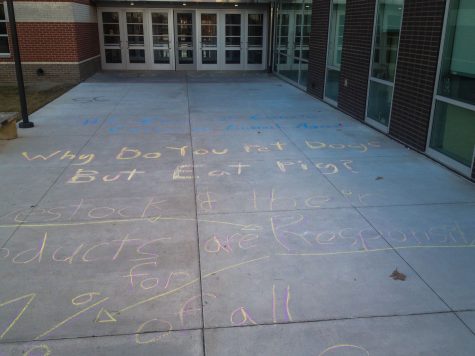Advocates push for change to 2020 census to include Arab-American option
Hala Hamid is a reporter and copy editor for The Free Press and has been on staff for three years. While she was born in the U.S., her parents immigrated from Iraq 24 years ago.
As I sat at my computer, filling out college applications, I scanned the race categories and hesitated. Black? No. White? No. Asian? Pacific Islander? American Indian? No, no and no. White is the closest option, but that’s not quite accurate. Arab-Americans have technically been included under the white category for decades. However, that might change when the next official census is distributed in 2020.
After a push from advocate groups, the Census Bureau will be testing out a new Middle Eastern or North African (MENA) option. Not only is the number of Arab-Americans in the U.S growing every day, the population is becoming more multicultural and multi-ethnic, and not everyone fits neatly into the traditional government classifications anymore.
While Arab-Americans are not officially recognized as a minority, we are often treated as such. I have seen firsthand how so many Arabs and Muslims are subjected to racial profiling, viewed as potential terrorists or treated differently simply because of what they wear. Often times, in American society, Arab-Americans are looked down upon compared to their other Caucasian counterparts. A good first step to equalize this treatment is to recognize them as a group of their own.
Besides the differences in treatment, there is also a vast undercount of the true number of Arab-Americans in America. Based on ancestry data, the Census Bureau estimated 1.9 million Arab-Americans in America in 2014. However, that number is based on a separate question about ancestry on the American Community Survey, a much smaller survey. The Arab American Institute, an advocacy group in Dearborn, Michigan, estimated the true number is 3.6 million as of 2014-almost double that of the government.
According to Census.gov, data is used for “economic development, business decisions and strategic planning.” Without a true population number, political decisions can be skewed and Arab-Americans won’t have as much say or impact on various issues such as how state and federal funding are distributed or the enforcement of equal employment opportunities, to name a few.
The practice of including Arab-Americans under the white classification dates back to the early 20th century. However, it’s time for that to change. If the push for a MENA category to be included on the census is approved, there will be no more guessing and searching for a category to fit into. The large and quickly growing Arab-American population deserves its own category and to be recognized as a group of its own.
Your donation will support the student journalists of Lawrence Free State High School. Your contribution will allow us to purchase equipment and cover our annual website hosting costs.










